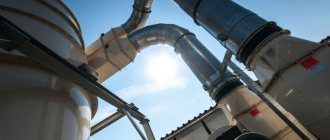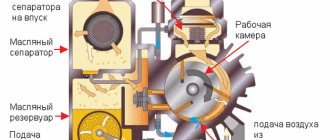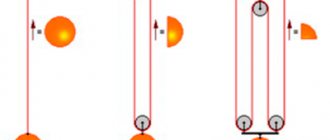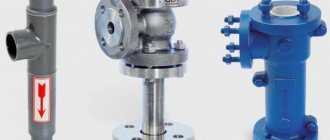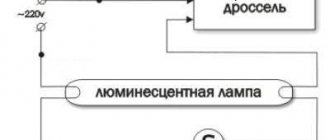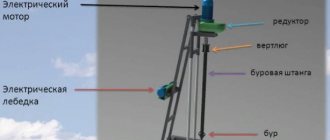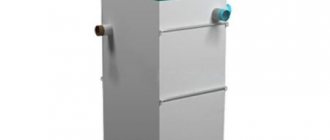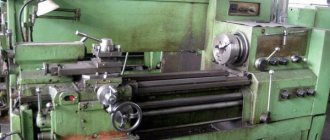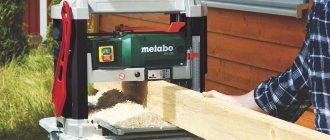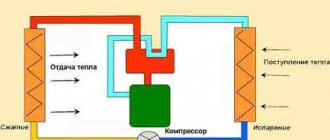A cyclone for air purification from dust is equipment that is used in some models of vacuum cleaners and industries to purify liquids and gases from suspended particles. The operating principle that the cyclone uses is inertial, using centrifugal and gravitational forces. Such dust collectors constitute the most widespread group among other dust collection devices and are used today in all areas of industry. The collected dust is usually recycled later.
Purpose of the cyclone
A cyclone can be used in transport to clean air from dust. This includes trucks such as KamAZ and MAZ. Using this equipment, it is possible to carry out preliminary effective cleaning of air, which at the next stage enters the internal combustion engine. Afterwards, complete cleaning occurs, which is carried out in an inertia-oil air filter. It may also be dry.
The equipment is also used in elevators, where grain products are involved in a complex of operations involving transportation, reloading, storage and processing. At each stage of the process, huge masses of mineral and organic dust particles are released into the air. They pollute small fractions, which are explosive and fire hazardous.
Filters in air purifiers
The following types of filters are used in air purifiers:
- Pre-cleaning. Conventional mesh filters, which are used at the first stage of cleaning, trap large particles of dust and animal hair.
- HEPA filters. They are an accordion assembled on both sides with micro-holes. They cope with mold and fungi spores, animal hair, and dust mites.
- Coal. Fights dust and absorbs odors using activated carbon.
- Electrostatic (ionic). They work on the principle of ionization, provide a high degree of purification, and cope with microorganisms.
- Photocatalytic. Purify the air using UV radiation. They completely disinfect the room from pathogenic bacteria and carcinogenic substances.
Main tasks
One of the main key tasks of grain processing industry enterprises is to prevent dust emissions and reduce the concentration of grain dust. To solve such problems, grain processing enterprises use dust-removing ventilation systems, which include aspiration and ventilation equipment.
In this case, a cyclone for air purification from dust is used for industrial air purification during the processing of grain materials and grain. Such equipment is easy to maintain and simple in design. It is inexpensive, characterized by high performance and low resistance. That is why such installations are today one of the most common among other types of equipment for mechanical dust removal.
Principle of operation
A cyclone for cleaning air from dust works on a fairly simple principle. It consists in the fact that streams of contaminated gas enter the apparatus through a pipe in the upper part. A gas flow is formed in the equipment, which constantly rotates. It is directed downward and rushes towards the conical part of the equipment.
Inertia, which is a centrifugal force, removes particles from the flow that settle on the walls of the device. They are captured by the secondary flow and carried to the lower part. Contaminants enter the outlet in the hopper, where dust is collected. The gas flow is cleared of contaminants, it moves from bottom to top and is discharged out through the exhaust pipe.
Homemade cyclone from a household vacuum cleaner
The first method has been presented on the Internet and on YouTube for quite some time. You can easily find many videos with similar homemade cyclones.
However, they raise quite natural questions and skepticism among professional builders. Therefore, it should be noted right away that they are mostly suitable for removing wood chips.
But it is better not to work with cement dust with such devices. The second option is more tailored to it.
The main “trick” that will allow you to easily suck in kilograms of garbage, wood, and metal filings and not worry about frequently changing filter bags is a homemade “separator”.
It will then need to be constructed from several components. For the entire assembly you will need:
regular vacuum cleaner
thick plastic bucket with lid
A bucket of Shitrok putty is best suited here. It is harder to flatten it with a vacuum.
plastic sewer pipe d-40mm
polypropylene sewer outlet at 90 degrees with a diameter of 40mm
40mm crown or utility knife
First of all, drill or carefully cut a through hole for the tube in the center of the bucket lid.
Mark the third hole closer to the edges of the cover, where the stiffener is.
If you do not have a special crown, then first pierce the intended circle with an awl and carefully cut it with a stationery knife.
The edges will be uneven, but they can be processed with a round file.
Two sewer outlets are inserted into these holes. So that they hold securely and there is no additional air leakage, it is better to glue them.
To do this, first sand the edges of the tube with sandpaper or a file to create a rough surface.
Do the same operation with the lid.
After this, insert the tube into the inside of the cap and apply a thick layer of glue with a hot-melt gun.
Don't skimp on glue. This will help create a good seal in these places and tightly close all the cracks.
There is actually another option in which you can do without glue and fan pipes altogether. To do this, purchase rubber adapter couplings from Leroy Merlin.
They come in different diameters. Select according to the size of your hose.
For example, a tube from a 35mm hose is tightly inserted into a 40/32 coupling. But in a 40mm pipe it will dangle. We'll have to reel in something and collective farm.
On the tube that is located on the edge of the lid, place the sewer outlet at 90 degrees.
At this point, the separator design can be said to be almost ready. Install the lid with outlets on the bucket.
The air intake hose from the vacuum cleaner is inserted into the central hole.
And the piece that you will use to collect all the debris and dust is stuck into the corner joint.
It is desirable that the tubes contain sealing rings that match the size of the corrugated hoses of the vacuum cleaner.
This completes the entire assembly. You can plug in the vacuum cleaner and use it.
The operating principle here is as follows. Coarse dust sucked into the container falls to the bottom of the container. At the same time, it does not enter the area where air is pumped directly.
Three factors help in this matter:
gravity
friction
centrifugal force
Typically, such a cyclone in factory designs has the shape of a cone, but cylindrical specimens also often cope well with this task.
True, the higher the bucket, the better the installation will work. Much here depends on the correct combination of the design of the container and the power of the vacuum cleaner. Here is a sign from Chinese cyclones on the correct selection of hose diameter and unit power.
In cylindrical buckets, the tangential air flow enters not through the curved side wall, but through the flat lid. Assembling such a device is much easier.
Also, if you have several buckets, you can use them alternately. Just remove the lid from one and move it to the other. Moreover, this is even easier to do than in bulky cyclones.
Then, at the very end of the work, simply take out the filled containers at once. This is a great time saver.
If you have a powerful vacuum cleaner, instead of a plastic bucket for emulsion paint, it is better to use a metal tank of the same shape. Otherwise, the bucket will collapse and flatten it.
The power regulator helps in this matter. If, of course, it is present in your model.
What else do you need to know about the principle of operation?
A cyclone for cleaning air from dust, the purpose of which was described above, provides centrifugal acceleration, which is several thousand times greater than the acceleration of gravity. This causes even the smallest dust particles to remain on the walls and not be carried away by the gas. The collected dust moves in a spiral, and the clean air changes direction, entering the cyclone zone. The degree of air purification reaches 90%. The final value will depend on the size of the equipment, air flow speed and properties of dust particles.
If the diameter of the cyclone is smaller, the efficiency of collecting debris will increase and the flow rate will increase. If we consider the cyclone together with elevator equipment, then dust collectors can increase the reliability of the complex, reducing the risk of fire hazard. These devices reduce the likelihood of occupational diseases of people working in storage facilities. Therefore, at any elevator, the installation of a cyclone acts as one of the necessary links in the technological chain.
Operating principle
Entering the cyclone, the flue gases swirl in the “snail” and are directed into the housing. Here, heavy ash particles are pressed against the walls under the action of centrifugal and gravitational forces and slide down into a collection hopper, from where they are unloaded manually, or evacuated by a screw conveyor or ash removal device into a slag removal channel.
The purified gases rise upward through the central pipe and are discharged into the atmosphere through an elbow, a common collector of the battery cyclone or an exhaust pipe.
Options
Depending on their design and the amount in the battery, cyclones can process different volumes of exhaust gases.
- Single – 600…20,000 m³;
- Battery – 15,000…150,000 m 3 /h;
- Battery recirculation – more than 100,000 m 3 /h.
The degree of purification (efficiency) when using cyclones reaches 82...90%. Efficiency is the ratio of the mass of ash deposited in the ash catcher to the amount received for treatment. It depends on the properties of solid particles, primarily their size and ability to stick together.
Cyclones equipped with suction, which returns up to 10% of the gas for re-processing, provide a purification rate of up to 94%.
The maximum gas temperature at the cyclone inlet is 400 °C.
Requirements for normal cyclone operating conditions
The design of cyclones, installation location and conditions for exhaust gas suction must meet certain requirements.
- No atmospheric air leaks.
- Timely cleaning of the bunker from accumulated ash.
- Possibility of complete unloading of the bunker when the boiler is not working.
- If boilers operate exclusively on solid fuel, then the cyclones should have no bypass channels.
Installation of cyclones and ash collectors
The cyclone is installed on the suction line of the smoke exhauster. The placement of the cyclone should provide the shortest (and as direct as possible) supply of gas ducts from the gas source to reduce aerodynamic drag. The location must provide access for repairs and maintenance, cleaning and ash removal. It is advisable to install indoors to avoid possible condensation. The flue pipes should not create a load with their weight on the cyclone body.
Advantages and disadvantages of ash collection cyclones
The advantages of cyclone ash collectors include simplicity of design, low cost, reliability, high performance, and the ability to be used for cleaning high-temperature and aggressive gases.
The disadvantages are a relatively low degree of purification in comparison with ash collectors based on a different operating principle. For example, “wet” ash collectors provide a purification degree of 92...96%, ash collectors with electric precipitators - 96...99%. The disadvantages of cyclones also include significant height dimensions (4-5 m) and high aerodynamic resistance.
Cyclone devices for purifying gases from dust are the most common in industry. They have the following advantages:
- 1) absence of moving parts in the device;
- 2) reliable operation at gas temperatures up to 500°C (for operation at higher temperatures, cyclops are made of special materials);
- 3) the ability to trap abrasive materials while protecting internal surfaces with special materials;
- 4) dry dust collection;
- 5) almost constant hydraulic resistance of the apparatus;
- 6) successful operation at high gas pressures;
- 7) ease of manufacture;
 maintaining high fractional efficiency with increasing dust content of gases.
maintaining high fractional efficiency with increasing dust content of gases.
- 1) high hydraulic resistance - 1250-1500 Pa;
- 2) poor capture of particles of size
Note that since the decisive factor determining the movement of the whine is aerodynamic forces, and not gravity, cyclones can be positioned obliquely and even horizontally.
The efficiency of collecting dust particles in the cyclone L of the cyclone is directly proportional to the gas velocity to the power of 1/2 and inversely proportional to the diameter of the apparatus to the power of 1/2. It is advisable to carry out the process at high speeds Vr
and small
DK.
However, an increase in
Vr
can lead to dust entrainment from the cyclone and a sharp increase in hydraulic resistance. Therefore, it is advisable to increase the efficiency of the cyclone by reducing the diameter of the apparatus, and not by increasing the gas velocity. Optimal ratio
Read also: Choosing a refrigerator for your home
In industry, it is customary to divide cyclones into high-efficiency and high-performance. The first ones are effective, but require high costs for the cleaning process; cyclones of the second type have low hydraulic resistance, but are worse at catching small particles.
In practice, cylindrical (with an elongated cylindrical part) and conical (with an elongated conical part) cyclones are widely used. The diameter of the cyclone element of cylindrical cyclones is no more than 2000 mm, and conical cyclones - no more than 3000 mm. The hydraulic resistance of cyclones is determined by the formula
where VT -
gas velocity in an arbitrary section of the apparatus. Resistance coefficient
where K
— coefficient, correspondingly equal to 16, for cyclones with tangential inlet and 7.5 for cyclones with rosette inlet;
hh -
dimensions of the inlet pipe; DTp is the diameter of the exhaust pipe.
The most widespread in Russia are cylindrical cyclones designed by NIIOgaz (Fig. 4.7). Their distinctive feature is an inclined inlet pipe, a relatively short cylindrical part and a high
Rice. 4.7.
The approximate trajectory of the gas in the cyclone is a cotton pipe, as well as a small opening angle of the conical part. The inclination of the inlet pipe and the screw-shaped top cover help direct the rotating gas flow downward, which reduces the hydraulic resistance of the cyclone. A snail is sometimes installed on the exhaust pipe of a cyclone, which spins up a rotating gas flow.
A bunker is installed under the cyclone to collect collected dust. In no case should dust accumulate in the conical part of the cyclone in order to avoid agitation and secondary entrainment into the exhaust pipe.
There are three types of cylindrical cyclones designed by NIIOgaz of the main TsN series, differing in the angle of inclination of the inlet pipe to the horizon:
- a) TsN-15 with an inclination angle of 15°, normal and shortened (TsN-15u);
- b) TsP-11 with an inclination angle of 11°, with increased efficiency, with high hydraulic resistance;
- c) TsN-24 with an inclination angle of 24°, with increased throughput at lower efficiency and reduced hydraulic resistance.
All cyclones designed by NIIOgaz are normalized. Any of the sizes of each type can be expressed as a fraction of the diameter of the cyclone D.
According to GOST 9617-67 (with amendments 1, 2), the following diameters are accepted for cyclones, mm: 200; 300; 400; 500; 600; 700; 800; 900; 1000; 1200; 1400; 1600; 1800; 2000; 2400; 3000. Due to the decrease in efficiency with increasing size, the use of cyclones of the TsN type with a diameter of more than 1000 mm is not recommended. In this case, a group of cyclones operating in parallel is installed. A double-row and circular layout is used (Fig. 4.8).
Rice.
4.8. Scheme of group arrangement of cyclones:
a
- double row;
b
- circular
The main requirement for the arrangement of cyclones in a group is the need for identical aerodynamic operating conditions for each cyclone.
If this condition is not met, more gas passes through some cyclones, less through others, and the normal operation of the group is disrupted due to gas flows through a common bunker.
In addition to cyclones designed by NIIOgaz, cyclones designed by LIOT (Leningrad Institute of Occupational Safety and Health) and SIOT (Sverdlovsk Institute of Occupational Safety and Health) have found quite wide application; they are usually used in industrial ventilation systems.
Compared to cyclones designed by NIIOgaz, cyclones designed by LIOT have an elongated cylindrical part and a deeply inserted exhaust pipe, as well as a larger opening angle of the conical part. In cyclones of the SIOT design there is no cylindrical part, and the inlet pipe has a triangular shape. These cyclones are also normalized, and any of their sizes can be expressed in fractions of the diameter. In terms of dust collection efficiency, these cyclones differ little from the cyclops designed by NIIOgaz.
In addition to cylindrical ones, conical cyclones designed by NIIOgaz of the S series (soot) of the SDK-TsN-33, SK-TsN-34 and SK-TsN-22 types are used, which differ from the cyclops of the TsN series by a scroll gas input, an elongated conical part and a smaller ratio of exhaust diameters pipe and cyclone (0.33, 0.34 and 0.22, respectively). Compared to cyclones of the CN series, they are characterized not only by significantly greater hydraulic resistance, but also by higher efficiency. With the same productivity, the sizes of cyclones of the SDK-TsN-33, SK-TsN-34 and SK-TsN-22 types are much larger than the sizes of the cyclones of the TsN series. These cyclones can be used with diameters up to 3000 mm.
Description of the cyclone brand JET CDC-2200 10001056T
The mentioned cyclone for cleaning air from dust, the characteristics of which will be presented below, has a cost of 132,000 rubles. This equipment is an exhaust unit, which has found application in small industries and private workshops. The unit can be used in conjunction with woodworking machines and for collecting debris from the floor during the operation of small wood production equipment.
Cyclones for air purification from dust
Owners of small workshops and just home craftsmen often have to deal with the problem of air purification after intensive work on wood processing, grinding metal surfaces, etc. Conventional room ventilation will not help here; you will need to install specialized equipment. With known skills, you can do it yourself.
Additional benefit
The design has a garbage container, which is made of metal; it is almost not subject to mechanical damage. The technology used by the cyclone guarantees fast and high-quality air purification and allows you to sort waste into fractions. Small particles enter special containers, while chips are sent to a metal hopper.
Technical characteristics of the model and some of its positive features
The above-mentioned cyclone model consumes air in a volume of 36 m3/min. The set includes one dust bag. The diameter of the vacuum cleaner pipe is 100 mm. The dimensions of the equipment are 1200x700x1800 mm. The power of the device is equivalent to 2600 W. The unit has two suction openings.
Dust collection bags are designed for 105 liters of volume. Such cyclones for air purification of wood dust weigh quite a lot. For example, the mass of the described model is 88 kg. Before purchasing such a device, it is important to pay attention to some features, including:
- long service life;
- convenient transportation;
- emergency shutdown;
- thoughtful design;
- mobility.
As for the long service life, it is ensured by many stiffening ribs, which contribute to effective cooling of the motor during operation. This increases service life and eliminates overheating. The unit is equipped with transport loops that allow you to move the equipment using a lifting mechanism.
Main types of cyclones
A cyclone for cleaning air from dust, the types of which will be presented below, is equipment similar to hydrocyclones. These designs have only some differences expressed in the shape of the body. Cyclones can be classified into direct-flow and counter-flow. In the first case, gas is discharged along one axis; such a system is not as effective as counterflow.
Cyclones are also divided according to the shape of the body, they can be:
- conical;
- cylindrical-conical;
- cylindrical.
A cyclone for cleaning air from dust, which you can make yourself, is also divided into elements. This allows us to distinguish between helical, tangential and spiral cyclone designs. Cylinders are also divided according to the direction of twisting: they can be right or left.
Construction [edit | edit code]
There is a huge variety of types of cyclones. In addition to the counter-flow cyclone described above, there are also less common direct-flow cyclones. Counterflow cyclones differ in size, the ratio of the cylindrical and conical parts, as well as the relative height (that is, the ratio of height to diameter) of the cylindrical part. The greater the relative height, the lower the coefficient of hydraulic resistance and the vacuum in the hopper (the less likelihood of dust being sucked into the apparatus), but the lower the degree of cleaning. The optimal relative height is 1.6, which corresponds to the “golden ratio” principle.
Making a cyclone with your own hands
You can easily make a cyclone for cleaning the air from dust with your own hands. This will allow you to set up furniture manufacturing in your own workshop. At the same time, workers will not be exposed to dangerous levels of fine wood dust that they would have to inhale. At the first stage, a centrifugal fan in the form of a snail is manufactured. The body can be made of alucobond, and the body covers can be made of 20 mm plywood.
Using a hand router, grooves are made in the lids, the diameter of which will be 3 mm. The volute body is installed in the groove, the entire structure is tightened with bolts. At the next stage, a fan for the cochlea is made from alucobond; for this, two circles are cut using a milling cutter, grooves are made into them, into which the blades are installed. Their gluing is carried out with a hot glue gun. This will result in a drum that looks like a squirrel wheel.
A cyclone for cleaning air from dust, which can be produced independently, will have a fairly durable and lightweight impeller with precise geometry. It is put on the engine axle. The one with a power of 0.55 kW is suitable. To make the body you will need 20 mm plywood, on the surface of which you need to draw the circles of the base using a compass. The upper body in the form of a cylinder is bent from a roofing sheet. The base is fastened with self-tapping screws, the joints are taped with double-sided tape. The sheet is tightened with blind rivets. The lower conical part is made according to the same principle.
Types and types of cyclone filters
Let's consider the variety of vortex inertial dust collectors and outline their main features and differences.
Countercurrent cyclones, abbreviation “C”
This term hides the most common, “classical” type of gravity-vortex dust cleaners, and the name is due to the fact that the medium in the dust collector, having reached a certain theoretical point, turns 180 degrees and rises up through the center of the column - against the flow of incoming air or gas.
Counterflow cyclone smoke purifier (in the foreground), made at PZGO
Looking ahead, it should be noted that countercurrent varieties are divided into many subtypes, which have their own nuances, but - in general - do not deviate far from the fundamental principle of operation of a countercurrent cyclone.
Bag cyclones
In some models, the cyclone column is supplemented with outlets to bags mounted on the supporting frame of the unit.
Bag version
Since centrifugal dust collectors show maximum efficiency only in relation to coarse and medium-dispersed particles, some manufacturers supplement the precipitators with a complementary bag system for collecting fine dust, which - under normal conditions - freely bypasses the column and is discharged through the outlet valve.
In such designs of dust collectors, small particles are directed through special air ducts into dust collection bags, and the flow of coarse and medium-dispersed dust enters the cyclone filter, where it is filtered on a vortex basis.
Hose cyclones
Some manufacturers of industrial cyclones are experimenting with combining bag and cyclone filters in a single housing.
Combined version (scheme)
In fact, such air purifying devices are hose blocks mounted on a plate and placed inside a rotating cyclone.
Such dust cleaning units combine the principles characteristic of both bag and vortex dust precipitators - medium and large particles are retained on the centrifugal-inertial principle, and the remaining microdispersed dust is filtered in microporous non-woven bags, just as it happens in “true” hose dust collectors.
Comment by “PZGO”: the use of the above models is justified only in specific conditions that exactly correspond to the stereometric, technological and economic expectations of the Customer. In most practical applications, two-stage filter systems based on a coarse cyclone and a full-fledged, full-size bag or even absorption filter will be much more effective.
Wet cyclones (hollow film scrubbers with flowing film)
Outstanding in its differences from the other gravity dust collectors discussed on this page is the wet cyclone, also called a hollow irrigated film scrubber.
Schematic diagram of the operation of a hollow scrubber
Structurally, the wet cyclone filter includes, in addition to everything, an irrigation unit (nozzle block) and is a “modernized” version of the dry cyclone.
The fundamental differences can be described as follows:
- In addition to the turbulence of the medium and the inertial rejection of particles on the chamber walls, the hollow scrubber generates a liquid micro-fog inside the working chamber, in which undesirable impurities are sorption;
- Spraying water (or absorbent) creates a flowing liquid film on the inner walls of the chamber, which continuously carries the captured impurities down into the sludge collector.
Important advantages of wet filters are:
- the possibility of safe processing of fire and explosive suspensions;
- cooling and humidification of gas or smoke flow;
- ability to capture both non-stick and sticky, oily dusts, wet components, aerosols;
- the ability to neutralize chemically active, abrasive inclusions;
- low pneumatic resistance, comparable to that of a dry cyclone;
- simplicity, reliability, durability and accessibility.
Please do not hesitate to inquire in more detail about this type of equipment from the specialists of the PZGO Client Department.
Battery cyclones (multi-cyclones)
To increase the productivity and/or efficiency of collecting solid impurities, cyclone-type dust collection units can be combined into blocks or batteries (so-called “multi-cyclones”, “battery cyclones”, “BC”).
Usually these are several individual, small in diameter (Ø no more than 30 cm), interconnected counterflow devices installed on one supporting frame (and often covered with a single casing).
Multicyclone
Battery installations and systems are mainly used to capture ash components of smoke emissions from energy enterprises (boiler houses, combined heat and power plants, thermal power plants), as well as to filter dust suspensions at asphalt plants, reinforced concrete products, loading/unloading areas for bulk materials, at mining and processing industries.
The most rational is to use a cyclone as the first, rough cleaning of smoke emissions.
The main disadvantage of smoke purification cyclones (both battery-operated and single-unit monoblock versions) is the complete “breakthrough” of odors, hazardous flue gases, furnace gases and acidic components, vapors and microscopic aerosols - sulfur oxides, nitrogen oxides, volatile mercury vapors, cadmium, arsenic, tellurium, hydrogen sulfide, hydrogen chloride, ketones, aldehydes, furans, dioxines and other compounds that pose exceptional danger.
In addition, even small deviations in the switching of cyclones inside the battery can lead to unwanted flows of medium from one device to another, sedimentation in the hopper and the formation of upward flows with the return removal of captured particles (the so-called bunker effect).
Maximum efficiency in complex, simultaneous filtration of smoke emissions of solid, gaseous and aerosol nature is shown by wet dust and gas collectors based on scrubbers and absorbers. Please check the information on these types of equipment with PZGO.
Medium recirculation systems in cyclones
As mentioned earlier, devices can be combined into batteries to increase efficiency or productivity, but some manufacturers go even further by equipping cyclones with special recirculation systems.
Recirculation is the selection of a certain volume of medium that has undergone a single cleaning and its redirection to the beginning of the treatment circuit.
Recirculation implies a periodic, one-time “rerun” of the medium through the treatment infrastructure, but it can also be multiple (English multi-recirculation) - when the flow, before being released from the dust collecting apparatus into the work shop or air pool, is passed through the bowels of the installation several times.
In practice, the recirculation pump (smoke exhauster) removes about 10-20% of the contaminated environment from the flow (from the area of the cyclone outlet valves located in the battery) and removes the contents for re-cleaning.
Cyclones with reverse cone CSC
Among the variety of centrifugal dust collectors, you can find unusual designs - cyclones with a reverse cone, coded “CSC”.
Such dust precipitators represent a “matryoshka”, consisting of a conventional cyclone placed inside a body expanding downward (in the form of a reverse cone).
CSC
In fact, CSCs are a “non-battery” type of recirculating filter:
- Dust (sawdust, shavings) is collected in the internal cyclone, as usual, on the inertial-vortex principle;
- At the bottom of the inner cone there is an annular slot that connects it to the outer return cone (optionally, a so-called breaker cone can be placed in front of the hopper);
- The dust, through the annular slot, enters the outer cone, and from there into the hopper, while the air, with dust residues, rises along the outer cone and again enters the inner cyclone.
In this way, recirculation is achieved within a monoblock apparatus. CSCs and their subtypes are not widely used in industry, but are sometimes used to purify air from abrasive dust, as a rule, in metallurgical and metalworking industries.
Horizontal direct-flow cyclones CPU
Direct-flow cyclone filters - unlike ordinary counter-flow filters - purify the air as the medium moves. As a rule, such devices are “cut”, using special nipples or other fasteners, into the ventilation / aspiration air duct (pipe), that is, they are installed horizontally - coaxially with the direction vector of the air flow.
Direct flow filter model
The principle of operation - inertial - does not differ from vertical models. Perhaps the only feature of the “CPU” is an additional blade (blade) rosette, which is installed inside the horizontal dust precipitator and provides swirling of the medium; the bunker is remote, also located under the device (can be carried out to a considerable distance).
The dust flow swirls, passing through the blade guides, and the dust is thrown onto the walls of the inner chamber, from where the sediment is discharged into the dust collector through the side pipe.
The recommended flow speed to achieve the nominal efficiency of such filters is at least 10-12 m/s.
Cyclones of the CPU type are used for primary, rough air purification in conditions of limited working area of the site (not allowing the installation of a vertical dust collector).
The same principle of operation is used in household vacuum cleaners, where the rotary module is often installed horizontally or at an angle relative to the floor.
Cyclones for vacuum cleaners
Cyclones for vacuum cleaners for construction and household purposes are widely used.
Completely repeating the principles of operation of industrial models, vacuum cleaner cyclone filters differ only in their smaller size and, perhaps, lower requirements for the degree of air purification from dust than industrial ones.
Household vacuum cleaners, as a rule, use direct-flow dust collectors to make the devices even more compact. A small rotary dust precipitator can be either built into the body of the vacuum cleaner itself, or made in the form of a special flask inserted “into the gap” between the device itself and the end of the working hose.
Flask attachment, suitable for all models of household vacuum cleaners
For more powerful construction vacuum cleaners, cyclonic dust collectors are often designed as a separate independent floor attachment. This significantly reduces the load on the main unit, especially in the processes of collecting ash and soot (cleaning fireplaces, chimneys, furnaces) and small construction waste, sawdust, crumbs, sand. Large versions of inertial traps are installed on mobile carts.
Centrifugal dust collector for construction vacuum cleaner, in the form of an attachment
The topic of vacuum cleaner cyclones finds a wide response on the Internet - on video hosting sites you can find hundreds of video instructions on how to create homemade cyclones for vacuum cleaners (from barrels, old buckets, traffic cones, sewer pipes and other improvised materials). It’s up to you to decide whether to purchase a reliable factory product or spend time making a dubious device yourself.
Abrasive wear of the working chamber
Continuous, aggressive contact of solid particles with the walls of the working chamber leads to rapid mechanical wear and abrasion of the metal; Wear is especially severe when filtering fine abrasive particles, for example, grinding, sharpening, roughing dust and chips, microparticles of calcium, vanadium, silicon, nickel contained in the ash of combustion of organic fuel.
The problem of wear is eliminated by the use of steels/alloys resistant to mechanical abrasion (for example, Swedish wear-resistant sheet steel “Hardox”, graphitized and high-manganese steels and alloys), by applying an abrasion-resistant chamber lining (for example, corundum cement), or, less commonly, by using replaceable abrasion-resistant bushings/liners.
Static electricity in cyclones and other dry dust collectors
Active contact of moving particles with each other and with the metal surface of the working chamber leads to the acquisition of an electrostatic charge by the body of the apparatus. To a large extent, the magnitude of such a charge is determined by the electrical properties of the filtered particulate.
Dependence of electrical resistance of dust on temperature. The graph shows that dust has maximum resistance at a temperature of just over 100 degrees Celsius
The electrostatic charge accumulated by the dust collector housing and the dust itself can be dangerous for both equipment and personnel:
- A strong electric charge - without proper grounding of the structure or as a result of a spark breakdown - can damage sensitive electronics, for example, a computer controller for an automation and monitoring system for the operation of a dust collection unit;
- The effect of charged dust on the human body has not been studied much. It is only known - and this is enough to cause concern - that charged dust settles in the human respiratory organs 2-3 times more actively and is much worse removed.
To reduce the cyclone charge and the electrification of dust, they are lined with an antistatic coating and ensure proper grounding of the electrical circuit.
Interesting: there are scientific works devoted to the recovery of electrostatic energy of charged dust, that is, ways to effectively “collect” and use it to improve the performance and energy efficiency of dust collection plants. However, such studies have not yet left the experimental field.
Processing of explosive and fire hazardous environments
This paragraph is directly related to the previous paragraph. Dry filters cannot be used to process dust-air mixtures that are prone to ignition and/or detonation.
The slightest spark that slips inside the cyclone can lead to an uncontrolled explosion of the environment - both inside the device itself and the surrounding dusty atmosphere of the production site, leading to an industrial or human tragedy.
When the oxygen content in the environment is below 10%, ignition of dust is impossible. But such conditions are usually not encountered in industrial practice, especially in the context of dust removal.
Photo: The aftermath of a dust explosion at a plant in Port Wentworth, Georgia, USA
The only safe devices for filtering explosive and fire hazardous dusts are wet scrubber and absorption filters.
Work methodology
The next stage of manufacturing a cyclone involves installing polypropylene pipes into the cylinder. They should be glued with hot glue. On the inside of the cylinder, the suction pipe must be given a rectangular shape. To do this, it is heated with a hairdryer, and then a wooden mandrel is inserted into it, after which it is cooled. The air filter housing is bent using the same principle. The filter can be borrowed from KamAZ, because it has an impressive filter curtain area.
Now you can connect the lower body and the upper cylinder by screwing the volute on top. The air filter is fixed using polypropylene elbows. The entire structure is assembled, and a plastic barrel is installed for sawdust. A transparent corrugated pipe must be used to connect to the lower cone, this will allow the master to see the filling level. At the last stage, the unit must be tested by connecting it, for example, to a jointing machine. After all, this equipment produces the most chips.
